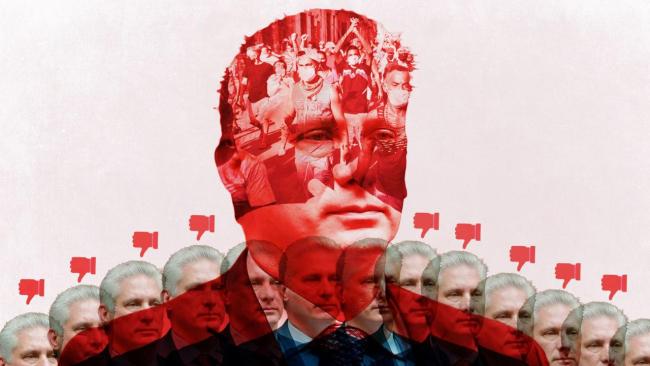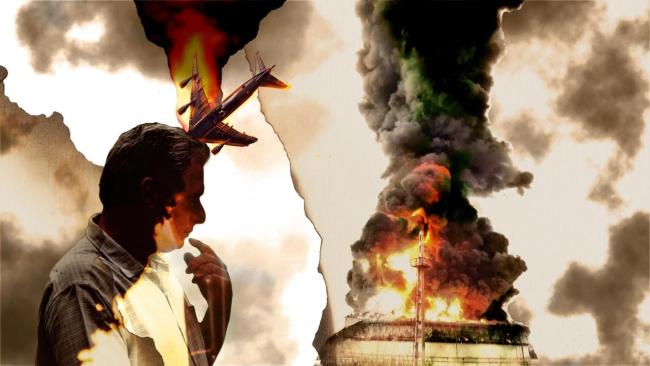A few days will mark the fifth anniversary of Raúl Castro’s 2018 designation of Miguel Díaz-Canel as the President of the Government. The leader is poised to be appointed once again if, as expected, the newly "elected" National Assembly, at its next meeting, confirms him in the post for another five-year term. Let us look at the data on how Cuba has fared under this administration.
Let us begin with the state of Agriculture on the island, since food is such a crucial issue for it.
The most recent numbers indicate that in 2022, compared to 2018, these were the differences with respect to that year: -29% tubers, -31% vegetables, -35% rice, 80% beans, -20% citrus, -10% other fruits, -31% potatoes, -26% corn (through 2021),
-34% milk, -11% beef, -57% pork and -23% eggs were produced. In other words, the production of all the most important agricultural products decreased, significantly.
The explanation for this contraction is found in data such as the average wage of agricultural workers: when Díaz-Canel took office it was 18% higher than the national average wage, but in 2021 it 16% below it; that is, agricultural wage earners saw a 34% drop in relative income. Add to this the fact that fertilizer production in the first three years of his term fell by 96%, practically disappearing; and, while in 2018 561 tractors were imported, in 2020 only 236 arrived.
This disinvestment in Agriculture, which led to less food, was a deliberate decision by the Díaz Canel government. Between 2020 and 2021, during the greatest tourism crisis in human history, the Government chose to invest only 7.2% less in Tourism, but 44% less in Agriculture. Thus while markets and stores were empty, 8,000 new five-star rooms were built.
Symptomatic of the low priority the government assigns to feeding the people is its policies regarding rice: during the same period in which domestic production fell by 35%, and imports from Brazil disappeared (due to political discrepancies), purchases from Vietnam also dropped by 33%. Due to a lack of resources? No, remember that hotels were still being opened.
The upshot is that, under Díaz-Canel, Cuba has suffered levels of inflation unknown in its history, placing it, even during this international inflationary crisis, among the three worst countries in terms of its monetary performance.
Industry, likewise, has suffered under the leadership of the current first secretary of the Communist Party: from 2018 to 2021 workers' pay in the sector plummeted by 25%, which may be behind the fact that industrial share of the country's total labor force has shrunk, with the production of intermediate goods dropping by 20% and that of final goods by 16%.
Although there is no data yet for 2022, taking into account the linear relationship between industrial production and electricity consumption, the historic and intense power outages that occurred last year certainly had an impact on industrial production, which is now in a mortal tailspin.
Halfway between Agriculture and Industry, under Díaz-Cancel sugar production, once the linchpin of the Cuban economy, has declined to production levels seen in the 1860s. During his tenure, the country’s already meager sugar production dropped by an additional 50%. In this way Diaz-Canel has achieved the seemingly impossible.
Tobacco is another industry that has, historically, been a juggernaut in Cuba. In 2019 it achieved record exports, worth 269 million. In 2021, however, they fell off to 204 million. In a very questionable decision, Diaz-Canel aims to save Cuban tobacco by putting Marino Murillo, the mastermind behind the disastrous Tarea Ordenamiento, or Ordering Tasks, at the head of the sector, which does not bode well for it.
The nickel industry, also a historic cornerstone of the Cuban economy, has produced less every year since 2018, and, to top it off, since 2022 has a $260-million debt to Canada’s Sherrit, almost 40% of the value of annual mining production.
And then there is the centerpiece, Tourism, which, after plummeting during the pandemic as much as other sun-and-beach destinations, has recovered at a much slower pace than them: while Mexico, Brazil and the Dominican Republic are already surpassing their pre-pandemic records, in 2022 Cuba received only 40% of the tourists it did in 2019, and it is estimated that it will take years before pre-Covid-19 levels are recovered.
The year Díaz-Canel was appointed president, 2018, Cuba's total exports reached $11.289 billion, an increase of 1.7% over the previous year, but in 2022 the country exported only $8.718 billion ? less than $6.7 billion if we adjust for global inflation, which means a contraction of 24%. This falloff was similar to that from the Special Period, but without the collapse of the entire Communist bloc, assigning it "merit" of its own.
A crucial indicator to evaluate the current president is foreign investment, which, in part arrives, depending on foreign businesspeople?s estimations of the potential of the Cuban economy. While in 2018 the Cuban Government approved projects financed by foreign investors worth 1.5 billion dollars, in 2022 only 402 million was captured. The same drop in foreign interest is evident in the number of square meters contracted at the Havana International Fair: in 2018, it was 28,000 square meters, while in 2022 it was down to 16,000, suggesting that, for whatever reason, investors do not have much confidence in Diaz-Canel's Cuba.
As is logical, such a contraction of the economy, although the time period in question is small, is already being seen in the people?s health, which is hardly surprising when one learns that when Díaz-Canel moved into the Palace of the Revolution the basic list of medicines in Cuba was lacking 45 medicines, while last year the number was 314.
The decline in human welfare under the Díaz-Canel government is even evident in extremely sensitive indicators key to the regime's propaganda, such as infant mortality: in 2018 in Cuba 3.9 children died for every thousand live births, in 2022 it rose to 7.5, a 95% increase, without precedent since this indicator has been recorded.
And, although Castroism insists on its successful management of the coronavirus crisis, acknowledging only 8,529 deaths, independent analyses based on official data, which indicate a very high mortality rate during the pandemic period, suggest that the real number of victims was around 62,000, which would place the Cuban government among the world?s worst handlers of the pandemic.
Of course, such economic and demographic results have an impact on the most frequently used economic index, GDP, which saw a 5.7% drop during this period; this "small" net reduction is suspicious, to say the least, considering the figures we have seen here, but this is what the National Statistics and Information Office (ONEI) has published, and we have to believe it...
In any case, it is not in the GDP reported by the ONEI where Díaz-Canel's results are best appreciated, but rather in the data from the immigration offices of the U.S. Government: in 2022, 129,000 more people fled to that country than those who did so from Camarioca, Mariel, during the Rafters Crisis, and in the 2016 exodus, all added together. Cuba had not lost so many sons in such a short time since the brutality perpetrated by Valeriano Weyler.
Of course, according to Díaz-Canel the culprit of all these disasters is the "blockade," but, even without taking into account Castroism's own responsibility for the existence of the U.S. embargo, the main cause of these results is in the Government?s investment decisions, which dedicates a disproportionate part of the island's capital to the Tourism sector, despite its poor performance; while Cuba's fields remain barren and food prices remain sky high. More than a lack of resources, Cuba has suffered from a misuse of the resources that it has.
Will this data be enough for any delegate to have doubts about the fitness of the current "president" to continue to service? If there were a free press and democracy in Cuba, would any party present as a candidate someone with such "achievements?" Despite this, it is most likely that in a few days the "representatives" of the people will vote, unanimously, to keep Díaz-Canel in his post, proving that, in Cuba, the problem is not economic, but rather political.


